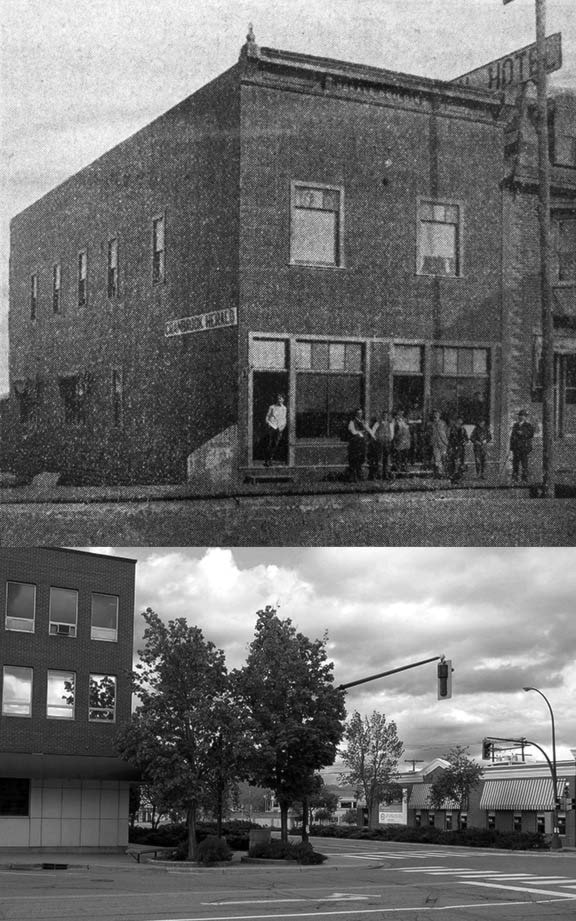Jim Cameron
"In the early days of the Kootenays, as soon as a town got well on its way with three general stores, a couple of hotels, a butcher shop, blacksmith shop and a livery stable, along would come ... some printer-journalist with a Washington or Army press, a few fonts of type, a few reams of paper and a keg of printer's ink, and he was away. According to the first issue of each, the town had the geographical location and the mineral wealth backing it to make it a second Spokane, Butte or Denver. They all told the same tale. Time, however, has told a different story; most of these early newspapers efforts now repose in the journalistic bone yard that continually yawns, but refuses to five up its dead."
So spake F. J. Smyth in his book Tales of the Kootenays, himself a newspaperman of long standing with at least one newspaper of his own – the Moyie Leader – reposing in the journalistic bone yard. Still, he knew his stuff and he was pretty much right on the money as far as the Kootenay newspapers went.
Frederick E. "Old Man" Simpson, a U.S. Civil War veteran from Boston, Mass., is often credited as editor of the first newspaper in town but that was not quite the case. In fact, the Herald was jointly owned by Mr. Simpson and his partner Horace T. Brown, another U.S. Civil War vet, when it began publication in March, 1898. Mr. Brown held the Herald's editor's chair while Mr. Simpson was taking care of the short-lived Wardner International newspaper, having previously closed the Marysville Tribune. Newspapermen tended to gamble early with their locations and it wasn't until Cranbrook that Messrs. Simpson and Brown won their bet.
Horace Brown retired from newspaper work soon after the Herald opened and returned to Spokane where he died in 1900. F.E. Simpson closed the Wardner office and took up duties in Cranbrook, a post he would maintain for 11 years.
The first Herald office, little more than a fancy wooden shack stood on the corner of 7th Avenue and 1st Street. Their printing press and sundry equipment arrived in early 1898, having been transported overland through the snow and mud from Kalispell. At the time, the Herald office was little more than an unenclosed floor which is where the press was placed, preparing to print as the building rose around them.
The Herald originally faced stiff competition with the Fort Steele Prospector published by A. B. Grace. Andrew Benjamin Grace came to Fort Steele in 1895 as a painter/decorator but soon recognized the need for the printed page and, so saying, published the first issue of the Prospector by means of hand-typed mimeograph (stencil) sheets. His first small, hand-driven printing press arrived by steamboat from Kalispell the following year. The term “hot off the press” may well have applied to the long-running editorial war waged between Liberal/Cranbrook booster Simpson and Conservative/Fort Steele booster Grace. The war of words ran the gamut from gentle mockery to outright lambasting of the other’s beliefs and shortcomings. In the end it was Mr. Simpson who had the last laugh as the town of Fort Steele slowly emptied and Cranbrook grew. In 1905, Mr. Grace gritted his teeth, swallowed his pride and relocated the Prospector newspaper to Cranbrook. The fact that both men were now batting for the same side seemed to calm the editorial waters somewhat and in fact the two appeared to grow downright amicable over the ensuing years.
In August, 1898, the Herald replaced their small printing plant with the largest cylinder printing press in the Kootenays and also added to their office a paper cutter, a perforator, a numbering machine and an assortment of type (the letters and symbols used for printing). The paper cutter proved especially useful the following month when the Herald was called upon to cut over $10,000 (about $296,000 by present day standards) worth of bills for the local Canadian Bank of Commerce. Mr. Simpson stated, “Since the job was finished the once reliable cutter has gotten cranky and refuses to cut common paper.” About this time The Herald moved into a second two-story building near the northwest corner of 9th Avenue and 1st Street.
By 1899, the Herald was printing 1,000 copies a week and running a busy printing business on the side. In one week alone it turned out its regular newspaper, a 72-page copy of Odd Fellows bylaws, a 33-page book of poetry and two books of stock certificates, not to mention the usual run of posters, placards, invitations, cards, and other such sundry items that served to bring in a steady income. In 1904 the Herald moved for the last time to new quarters on Baker Street next to the Wentworth (Allan) Hotel. Of all the papers of those early days, and there were surprisingly many, the Herald proved among the most resilient. Although owner/editor Simpson sold out in November, 1909, the business continued until 1927. Mr. Simpson spent his remaining years in both the real estate business in Kamloops and as editor of the Kamloops Standard-Sentinel, later starting a short-lived society paper in Victoria. He died on Nov. 23, 1920. A. B. Grace passed away in Cranbrook on Dec.11, 1915, three years after his retirement from the newspaper business. Both he and his wife Elizabeth are buried in the Old General cemetery.
Endnote: In 1904, F.E. Simpson, in partnership with Arthur Bennett, launched the Lethbridge Weekly Herald. Much of the first issue’s preliminary work was done in the Cranbrook office. By 1906 both men had sold out their interests in the enterprise. The paper remains in publication today as the daily Lethbridge Herald.
